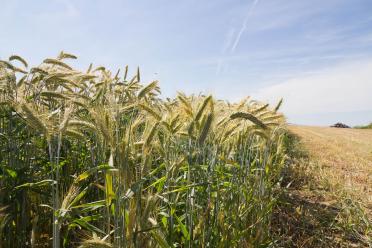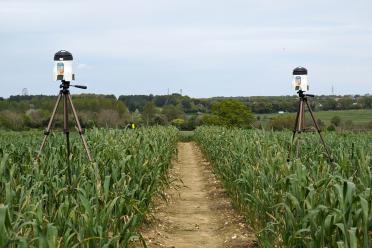
New research suggests the approach, developed at the Earlham Institute and Natural History Museum, could soon replace existing methods for detecting infection, which look for visible symptoms on the plants - at which point it is often too late.
With agricultural systems under continual threat from wind-borne diseases the ability to rapidly detect and respond to specific pathogens would transform the use of fungicides, improve sustainability, and strengthen global food security.
All living organisms shed fragments of their DNA into the environment, which provides opportunities to identify and monitor biodiversity from the traces of biological material in the air.
Researchers at the Earlham Institute and Natural History Museum have developed a revolutionary approach to benefit from this phenomenon - AirSeq.
AirSeq starts by pulling thousands of litres of air through a filter to capture any biological material. A number of steps are then taken to extract DNA from cells and prepare these fragments for sequencing, before cutting-edge software profiles the sequences to match each piece to an organism.
To demonstrate the accuracy of AirSeq, the researchers first tested their approach in a wind tunnel. By releasing increasing concentrations of Bacillus thuringiensis spores at set time intervals, the team were able to compare the relative abundance detected in the sequenced samples from their device.
They were able to see a clear increase in the relative abundance of B. thuringiensis, mirroring the release of higher concentrations over time.
The next step was to demonstrate AirSeq’s ability for biodiversity monitoring, and tracking species of interest, in an agricultural setting. The team captured air for an hour, three times a week over almost seven weeks, in a field where wheat, barley, and peas were growing.
From the sequenced biological material they captured, they were able to detect and record the relative abundance of viral, bacterial, and eukaryotic organisms - which included known crop pathogens and insects such as aphids.
The findings show that AirSeq can accurately recover, sequence, and match the DNA to a pathogenic species of interest. It is also able to track the relative abundance of each species over several weeks, which could be used to monitor the efficacy of any interventions.
